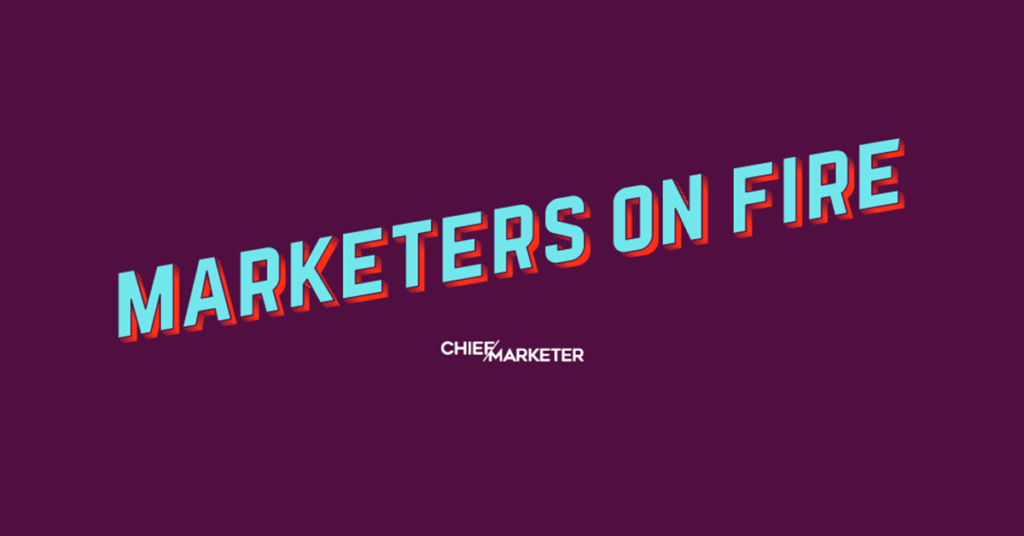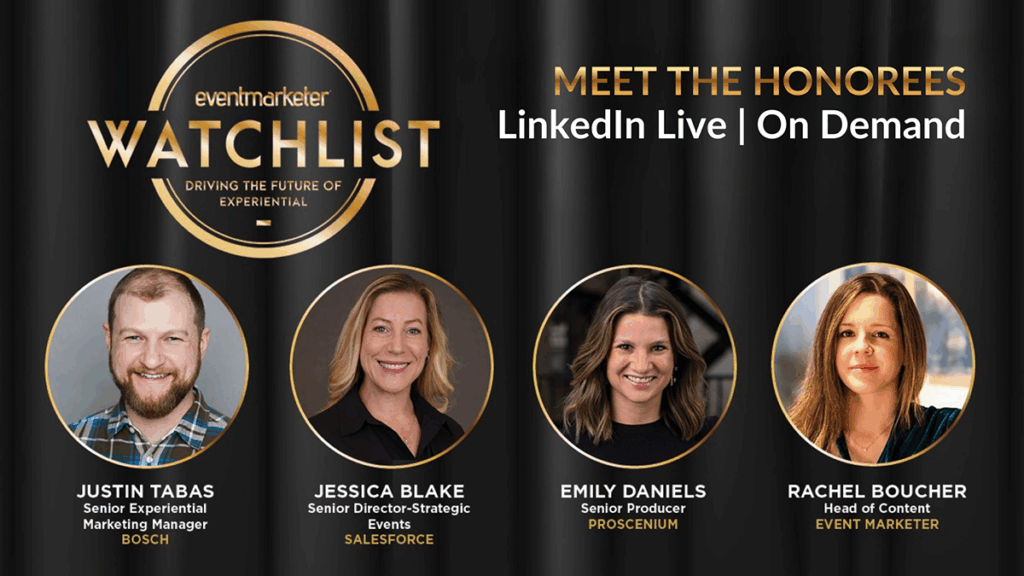The fashion and apparel brand Esprit, known throughout the ‘80s and ‘90s for its colorful, oversized sweatshirts and ubiquitous three-striped logo, is seeking a revival on U.S. soil. And it brought on Ana Andjelic, former Chief Brand Officer of Banana Republic, to lead the charge.
Esprit’s new Global Chief Brand Officer is leaning into the brand’s heritage while modernizing it for the cultural moment, Andjelic told Chief Marketer. “There was a very innovative, creative undercurrent that propelled the brand to become what it became in the ‘80s and the ‘90s,” she says, “an unbelievable branding primer, in terms of graphic design, images, photography, our direction and store design… It was something that we now consider table stakes, but that was never done before.”
Her goal is two-fold: to remind Gen Xers and Boomers that Esprit is back after falling off the map, and to attract Gen Z through the signature Esprit “look.” We spoke with Andjelic about her vision and strategy for the brand’s comeback, the art and science of global brand-building, insights gleaned from previous marketing gigs and what it takes to succeed as a modern CMO.

Chief Marketer: What is your vision for Esprit from a brand perspective?
Ana Andjelic, Global Chief Brand Officer of Esprit: In terms of brand vision, it’s almost a dream gig in a sense that this is one of the iconic American—and then global—brands. Most people don’t even know that it was founded in California in 1968 in San Francisco, the same year the Gap was founded. There was a very innovative, creative undercurrent that propelled that brand to become what it became in the ’80s and the ’90s—an unbelievable branding primer, in terms of graphic design, images, photography, our direction, store design… That was something that we now consider table stakes, but that was never done before. They had Ettore Sottsass, the founder of Memphis Group, design their store. We still have the cues of Memphis design everywhere now. People are crazy about it. And that was 40 years ago. Then there is Oliviero Toscani, the legendary photographer who used real people in campaigns.
That’s what I doubled down on, that irreverence of the brand. We are playful, mischievous, we don’t take ourselves seriously. We do everything with a wink. That mischievous brand DNA is very relevant for 2023 and beyond. You see what Marni, Hermes and Gucci are doing… Even in luxury fashion; you have the pigeon bag now. There are memes, there are luxury items that are toys. You have playful Hermes windows. Everything is about that riff on “not ordinary.” So that’s where I see Esprit going. That sense of wonder, that sense of playfulness, that sense of game. And that is very relevant with how Gen Z is shopping: Everything is gamified. That is where I see the bridge between the future and the heritage.
CM: Following up on that, how are you leveraging the brand’s past?
AA: We have a two-fold goal, which is to remind people, like Gen X and Boomers, that we are back, because we went off the map. And then attract Gen Z through the Esprit look. Gen Z already has that look without even knowing it—very layered, oversized, unisex, metropolitan outdoor—which means hiking boots with a suit. That already exists. And then the colorful Esprit logo. They’ve seen it on Depop, on Thread, in marketplaces on TikTok. It’s familiar, but they’ve never heard of Esprit.
And then for our new retail popup, we honed in on the concept of the original brand, how it approached fashion advertising, marketing, merchandising, and so on. It’s also where a lot of current trends originated. If you [analyze] emerging trends, you go back to Esprit styling. When you look at all the advertising, their styling is unbelievably modern.
CM: The role entails leading Esprit’s global creative and design hub in New York. Can you talk about its purpose and direction?
AA: We’re building a brand marketing design office in New York right now. The whole idea is to lead Esprit design, from the Esprit look to seven signature items we are developing. Like the Fendi Baguette, for example, or the Gucci belt, or the Big Mac for McDonald’s. We want to be known and recognized on the street for seven signature items. That’s on the design side. On the marketing side, the vision is to have the latest and the greatest, the most cutting-edge marketing approach. That is a mix of always-on and campaign work, but very heavy on activating the cultural communities, the micro-influencers, and getting that cultural credibility.
And then the third one is the brand. It’s the brand creative, which is the aesthetics we are putting forward. And that aesthetics is very aligned the way we approach pop-ups. So this first spring campaign that we just shot is about what Esprit would look like if it was created now in 2023. So, a lot of mischief, a lot of movement, a lot of color—but in 2023. I don’t want to copy ourselves. I want to evolve. We took all the cues and the DNA and made it reborn in ’23.
CM: What are some lessons learned from your previous marketing roles that you’ve brought to your new gig?
AA: At Banana Republic, I came into a marketing and design organization that already had 200 people. And here, I’m building that 200 people from the first hire. We have 96 to go. It’s a completely different approach when you’re building something from the ground up than when you’re trying to change an already existing organization.
What I do know is that the window of opportunity is only so big, and with any rebrand, you have to move fast and be unbelievably decisive. You need to be brave, you need to be bold, and you need to take risks. And you need to have a clear aesthetic point of view. It’s not going to be for everyone, but that’s fine. So, a clarity of aesthetic, point of view, design approach, merchandising selection, the “look,” and the clarity of that world. Without that, you can’t even start.
CM: So you’re rebuilding Esprit’s U.S. presence from the ground up.
AA: Esprit was away from U.S. market for more than a decade. And this is a global role. Esprit exists in Europe under very different value propositions. It exists in Asia and is already similar to U.S. in certain markets like Taiwan and Hong Kong: They have been there, but they left. In South America and China, they never been there. So it’s a different challenge globally, but at the same time, the priority is to build the markets where Esprit has not been present and to reposition it in the markets where it has.
CM: How did you go about forming your brand vision? What was that process like?
AA: You look at four things. You look at what is happening culturally right now. I don’t look at trends; I look at culture. So that means the undercurrents, the deeper things that are at the cusp of happening. That’s number one. The second one is, who is your customer? Who are the personas? What is the geographic? What is the demographic? Who are we designing for? You’re not designing for a monolith. It’s not a mass audience. It’s like four different audiences at scale.
The third one is the company itself. You look at the assets. What are the company resources? And you look at the gap of where we need to be and where we are now, and who and what we need to get us there. The fourth one is competition. For me, it’s more in terms of price point. You compete with a certain set in terms of aesthetics. You compete with another set in terms of customer. You can compete in terms of culture. It’s a mishmash. I’m informed by the competition, but culture, customer and company informs me more.
CM: What trends in the marketplace should marketers be focusing on right now?
AA: I would recommend a strategic and holistic approach, which means looking at where the marketing connects with merchandising, where merchandise connects with design, where brand connects with the product, and where all of the above connects with physical retail and the experience. Look at the entire brand experience. That’s your job. Sure, you can use data, but why? To connect better with merchandising, to give direction to design the product better, to set the price. I recommend a holistic view in this role.
CM: For those marketers with aspirations toward the C-suite, what qualities and skills should they be honing?
AA: Left brain and right brain. It’s better if you have both. That means both creative and strategic thinking, and then scenario planning and system thinking because of what I said earlier. Rather than have a narrow focus and specialization, I would say the chief marketers for 2023 beyond are generalists. They need to speak the language of everyone, from CRM to performance marketing retargeting to our direction. And then not lose sight of the big picture.






